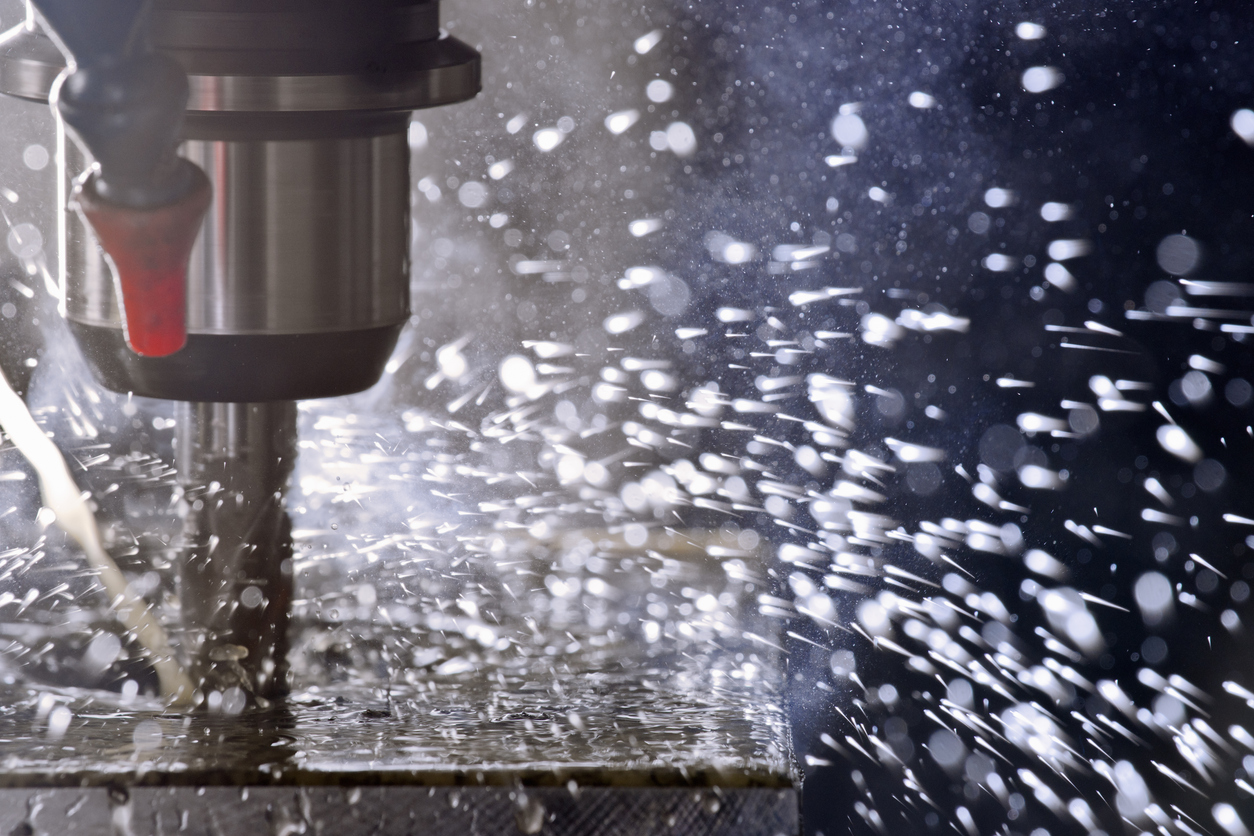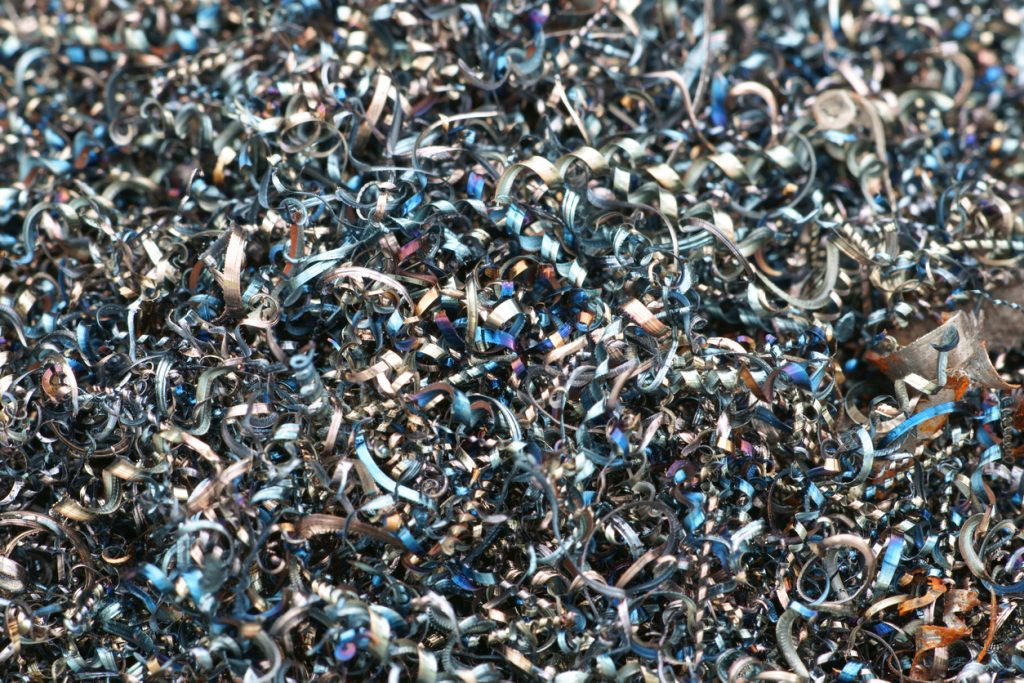SWARF RECYCLING:
Fabrication Scrap & Metal Shavings

SWARF Recycling –
Let Us Manage Your Fabrication Scrap & Metal Shavings
What is SWARF?
SWARF refers to the metal shavings, chips, or filings that are produced during metalworking processes such as machining, grinding, or drilling. “SWARF” is not an acronym. The term is derived from an old English word meaning “to shave” or “to file.” It specifically refers to the by-products, such as shavings, chips, or filings, that result from cutting or grinding metal, wood, or other materials. The word ” SWARF” is widely used in the manufacturing and machining industries to describe this type of waste material. HazChem Environmental is an expert in managing SWARF and recycling metal shavings, fabrication scrap, metal chip recycling.
How is SWARF Produced?
SWARF is produced during various material removal processes in manufacturing and machining. These processes involve cutting, grinding, drilling, or otherwise working with materials to shape or finish them. Here’s how SWARF is typically produced:
- Machining:
- Turning: In processes like lathe turning, a single-point cutting tool removes material from a rotating workpiece. The removed material forms long, continuous SWARF, often referred to as “turnings” or “chips.”
- Milling: In milling, a rotating cutting tool moves across a stationary workpiece, removing material to shape or finish it. This process produces chips of varying sizes, depending on the tool and operation.
- Drilling: Drilling involves a rotating drill bit that removes material to create holes in the workpiece, generating chips or SWARF that are usually spiral or short in shape.
- Grinding:
- Grinding involves an abrasive wheel removing small amounts of material from the surface of a workpiece. This process creates very fine particles or dust-like SWARF, often referred to as “grindings” or “dust.”
- Sawing:
- Sawing cuts materials using a saw blade. The blade’s teeth remove material in the form of small chips or sawdust, which is also considered SWARF.
- Cutting and Shaping:
- Processes like laser cutting, plasma cutting, or waterjet cutting remove material from a workpiece to create specific shapes. These methods produce SWARF in the form of fine particles or larger chips, depending on the material and cutting technique.
The type and characteristics of SWARF produced depend on the material being worked on (such as metal, plastic, or wood), the machining process, and the cutting tools used. Proper management of SWARF is important for safety, efficiency, and environmental reasons.

SWARF may be hazardous:
SWARF can contain various hazardous materials depending on the materials being machined and the processes used. Some potential hazardous materials found in SWARF include:
Metal Particles:
Toxic Metals: SWARF from machining operations involving metals like lead, cadmium, or mercury can contain toxic metal particles.
Heavy Metals: Metals such as chromium, nickel, and cobalt, commonly found in stainless steels and alloys, can pose health risks if inhaled or ingested.
Cutting Fluids and Lubricants:
Cutting fluids and coolants used in machining processes can be absorbed by SWARF. These fluids may contain hazardous chemicals such as chlorinated paraffins, biocides, or petroleum-based oils, which can be harmful if not handled properly. HazChem also manages your fluids and lubricant disposal.
Residual Chemicals and Coatings:
SWARF from materials with surface coatings or treatments may contain hazardous chemicals. For example, SWARF from coated metals or composites might include residues of paint, primers, or galvanizing agents, which can be toxic.
Oxides and Corrosive Materials:
Metal SWARF can oxidize, forming metal oxides that may be hazardous. Additionally, some SWARF may contain residues of corrosive materials used in processing or cleaning.
Combustible or Reactive Metals:
SWARF from metals like magnesium, titanium, or aluminum can be highly combustible or reactive, posing fire or explosion hazards if not handled properly.
Biological Hazards:
In some cases, SWARF might be contaminated with biological materials, especially if the machining involves biomedical implants or devices. Due to these potential hazards, it is crucial to handle SWARF with care, use appropriate personal protective equipment (PPE), and follow proper disposal and recycling procedures to minimize environmental and health risks.
How can SWARF be collected?
SWARF can be collected using various methods, including:
- Chip Conveyors: These systems collect and transport SWARF away from the machining area.
- Bins or Containers: Manual collection into designated bins or containers.
- Vacuum Systems: Used for finer SWARF or dust-like particles.
Can SWARF be recycled?
Yes, SWARF can often be recycled. Recycling methods may involve:
- Melting down metal shavings to reuse the metal.
- Processing SWARF to extract oils and fluids for reuse.
- Using SWARF in metal alloy production.
Industries that produce SWARF
Industries that commonly produce SWARF include:
- Automotive manufacturing and repair.
- Aerospace and aviation.
- Machinery and equipment manufacturing.
- Metal fabrication and machining.
Importance of safe handling by experienced professionals
It is crucial to handle SWARF safely and responsibly:
- Environmental Impact: Improper disposal can lead to soil and water contamination.
- Safety Concerns: SWARF can be sharp and may contain hazardous substances.
- Legal Compliance: Regulations often mandate proper disposal and recycling methods.
By emphasizing these points, your website page can educate readers on the significance of managing SWARF effectively for both environmental sustainability and workplace safety.
Our Team is always ready to deploy, 24 hours a day, 365 days per year, rain or shine, including holidays. We do not rely on automated answering systems for our main phone line (630) 458-1910. Instead, we guarantee that a live person will answer your call, regardless of whether it is a weekend, holiday, or any other day.
Combining Recycling Services with other industrial waste disposal is more efficient. Learn about our other Industrial Recycling, Cardboard Recycling, Commercial Plastic Recycling, Hazardous Waste Recycling, and View other HazChem Services.

Compliant. Responsive. Safe.
Call 630-458-1910 for immediate assistance. Open 24/7/365
For a FREE, no-obligation quote, click the button below
